UCLH ICU Pain Management
Published: Digital Health coursework, 2020
My Role: UX researcher
Responsibility:
- Collect users’ needs
- Evaluate if the product meets users’ needs
Tags: Digital Health, UX research
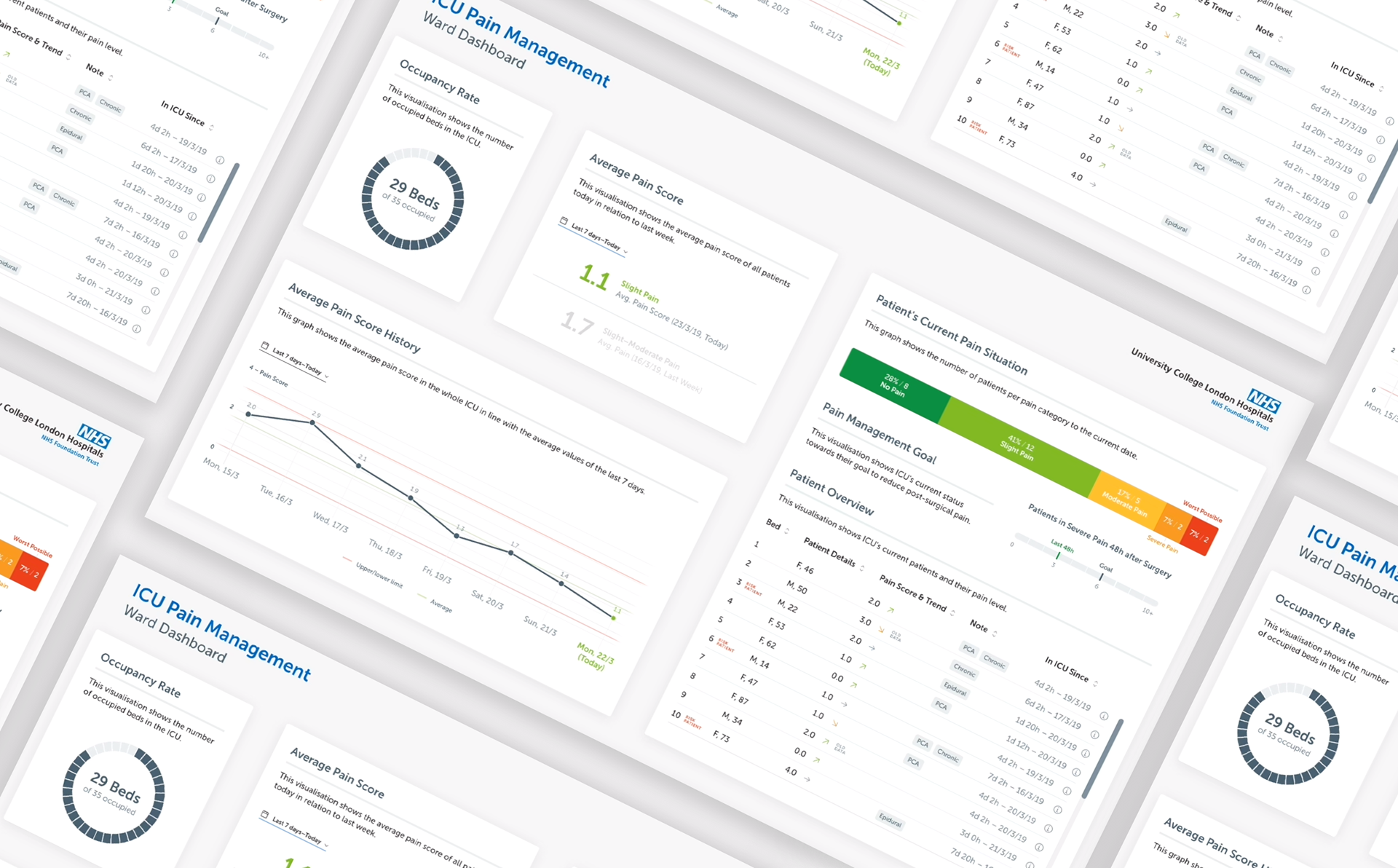
1. Design Process, Research Goal & Method
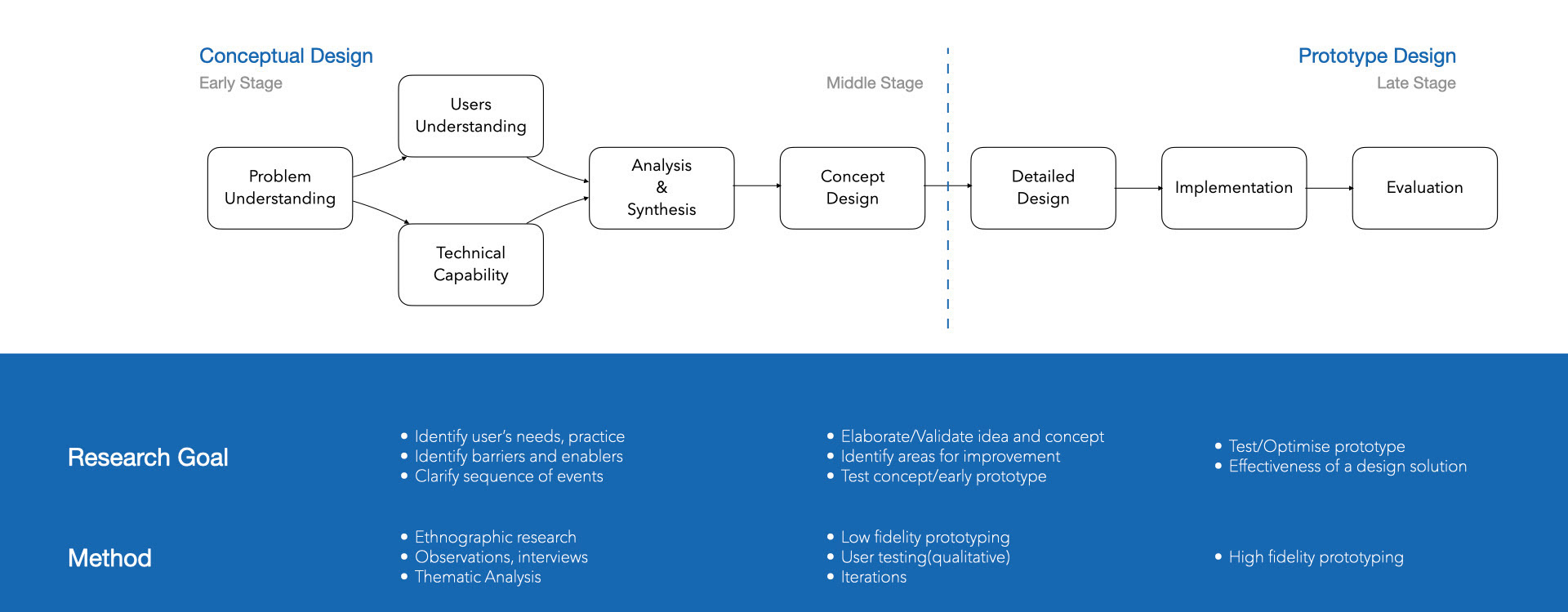
2. User Understanding
Interviews
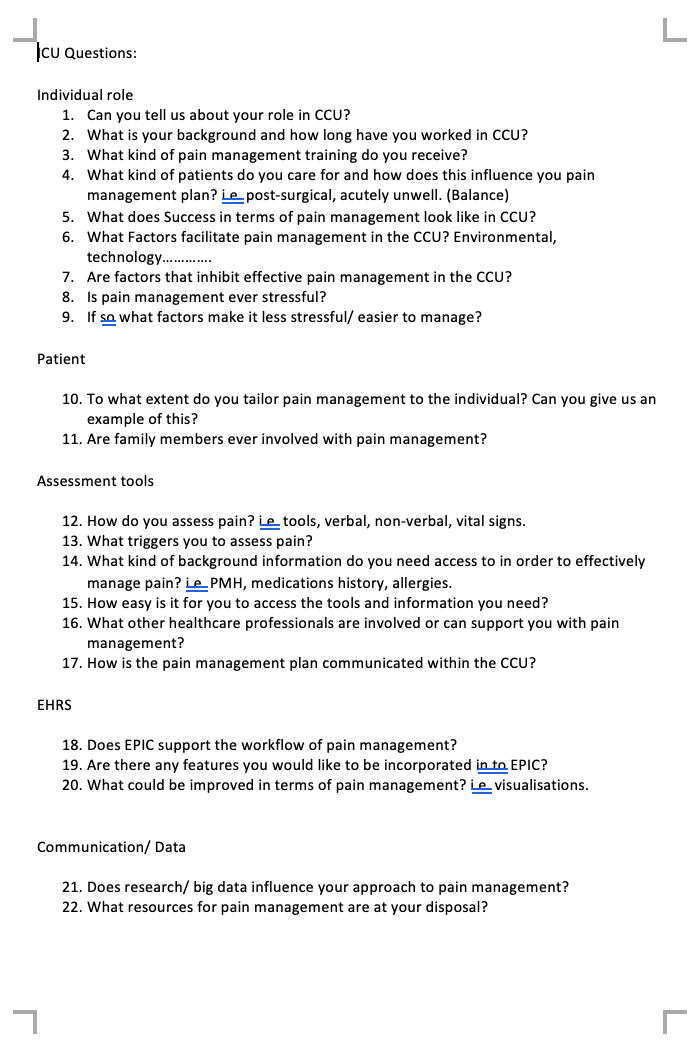 | 12 interviews with 12 ICU staff from different roles were conducted by 12 groups to collect data. |
Observations
An observational study was also conducted when we arrived ICU wards. The ICU layout, artifacts, etc. were collected for further analysis.
 |  |
| ICU ward | dashboard used in the ward |
Thematic Analysis
Qualitative data was analyzed with Google online sheet to collaborate with other teammates.
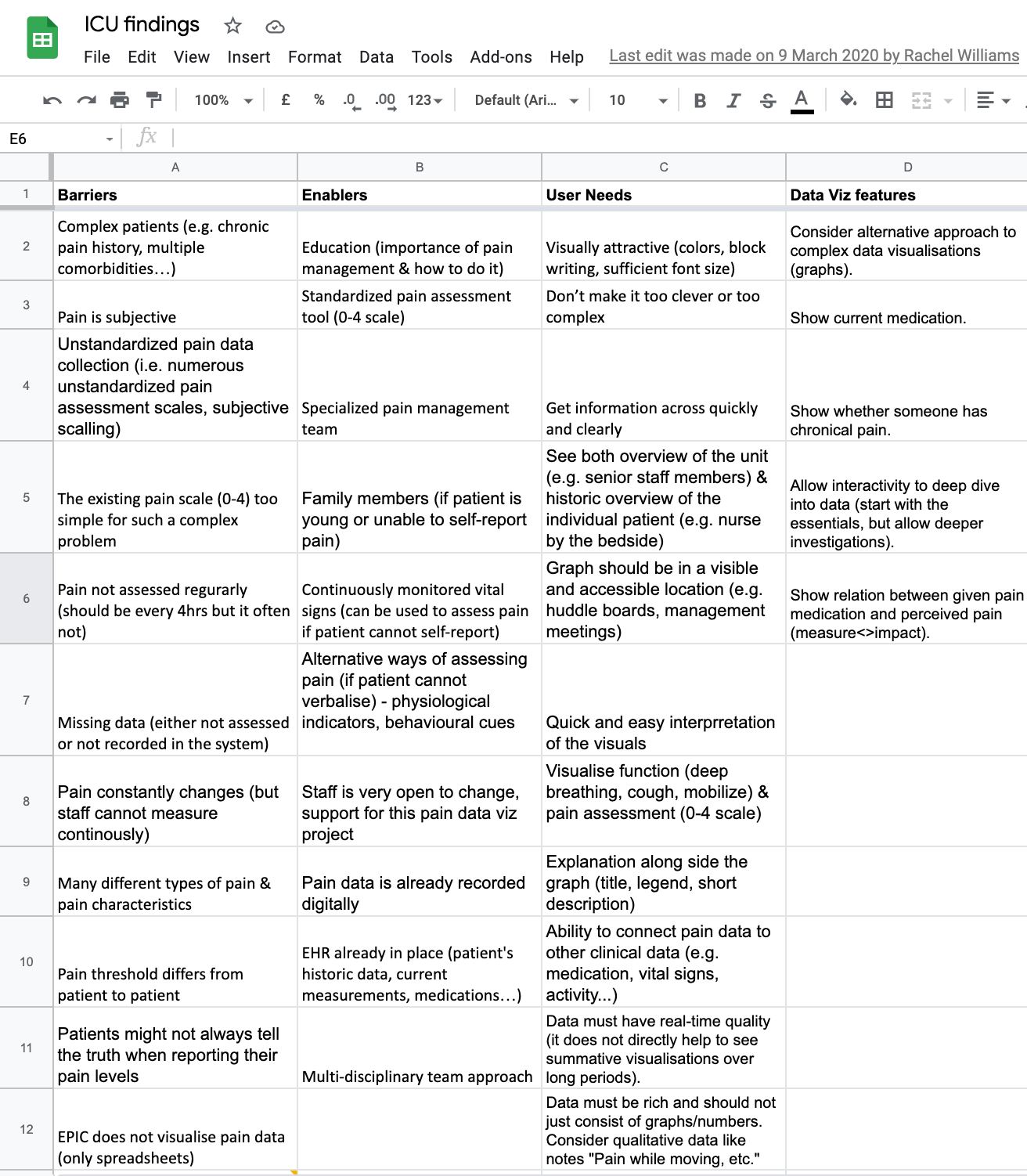
3. Analysis & Synthesis
COM-B Model, a human behaviour change model was used to find users’ Barriers and Enablers.

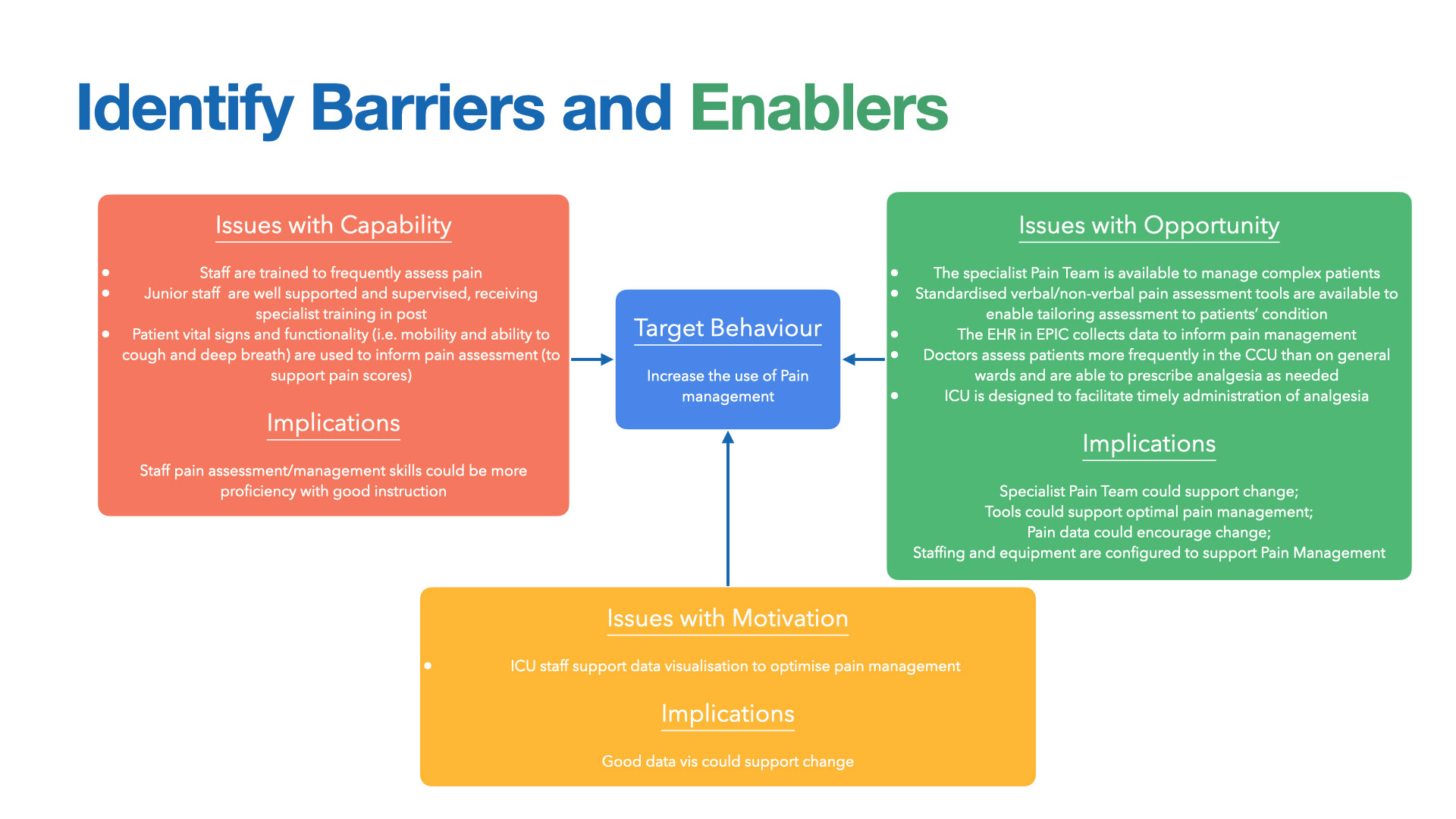 | 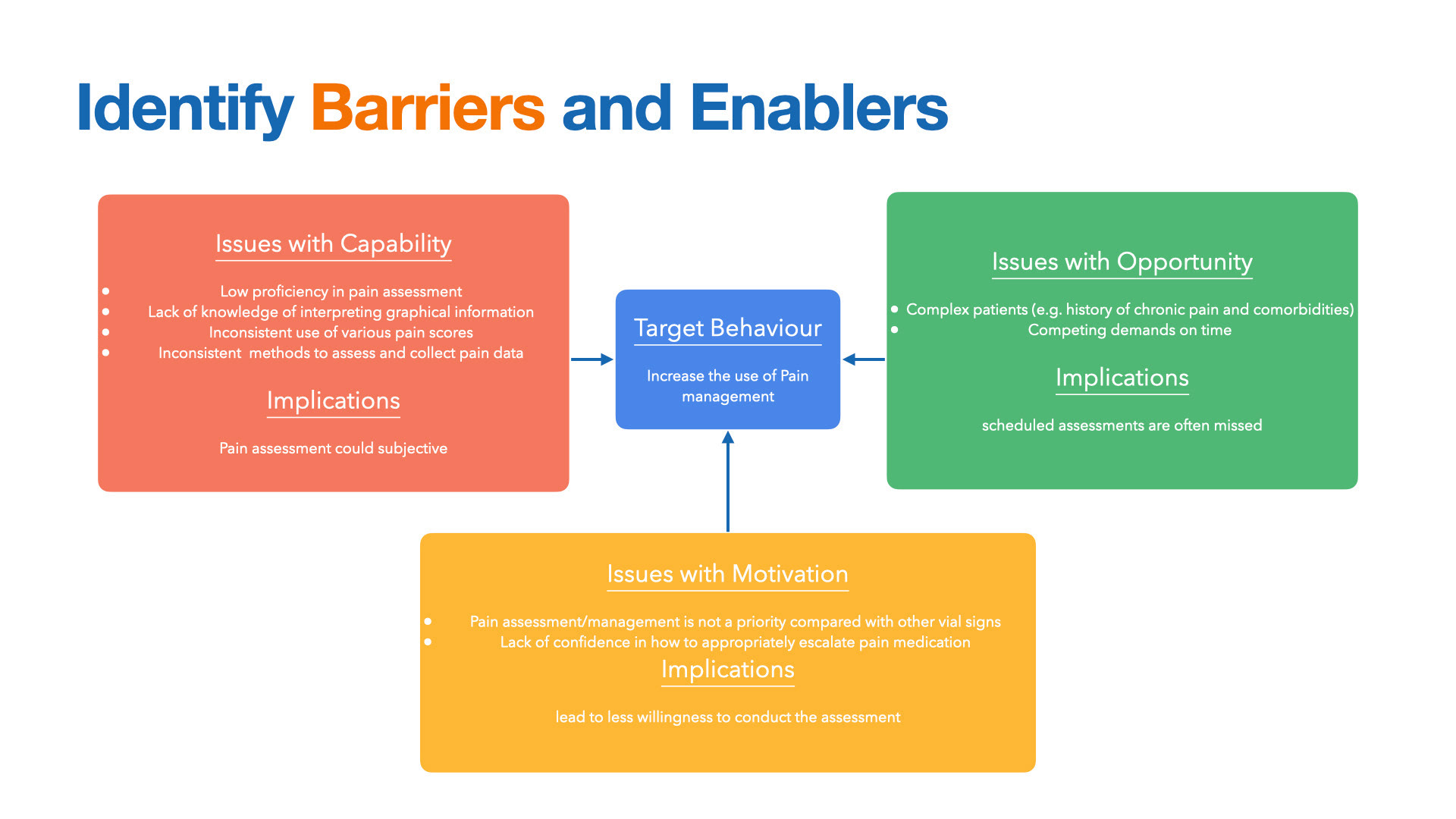 |
| the enablers analysis | the barriers analysis |
4. Findings
Common User Needs
Quick simple interpretation
Learn from historical data
Easily accessible location
Patient data privacy and security.
Specialized User Needs
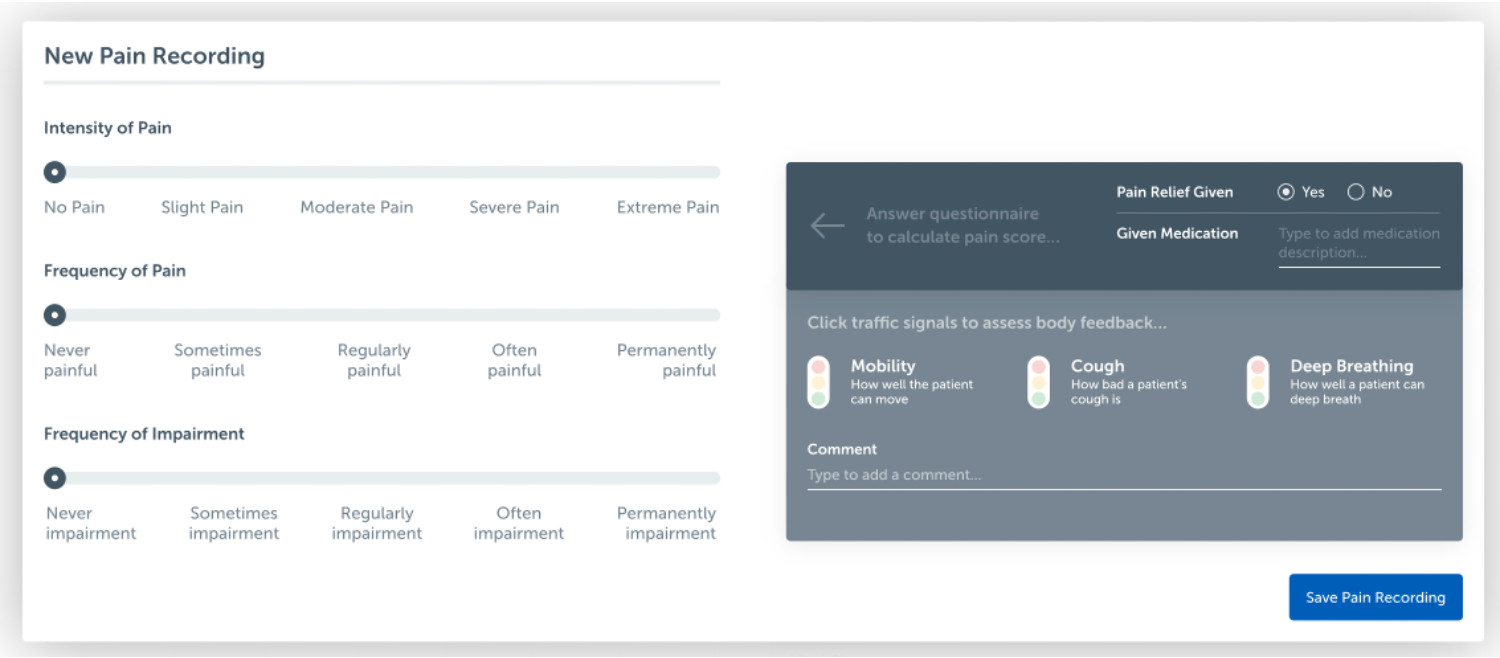 | Bedside Clinical Staff 1. Overview of individual patient’s current and historic pain data; 2. Pain data & other clinical data (medication, vital signs); 3. Clear and simple pain data collection; 4. Record and display quantitative data (0-4 pain scale); 5. Record and display qualitative data (deep breathing, coughing, mobilizing, clinical notes); 6. Accessible on the bedside computers; |
 | ICU Ward 1. Snapshot of what is happening on the ward; 2. Overview of the unit’s historic and current pain management performance; 3. Visually seethe end quality improvement goal; 4. Accessible on a large public display; 5. Visible and easily accessible location (hallway) |
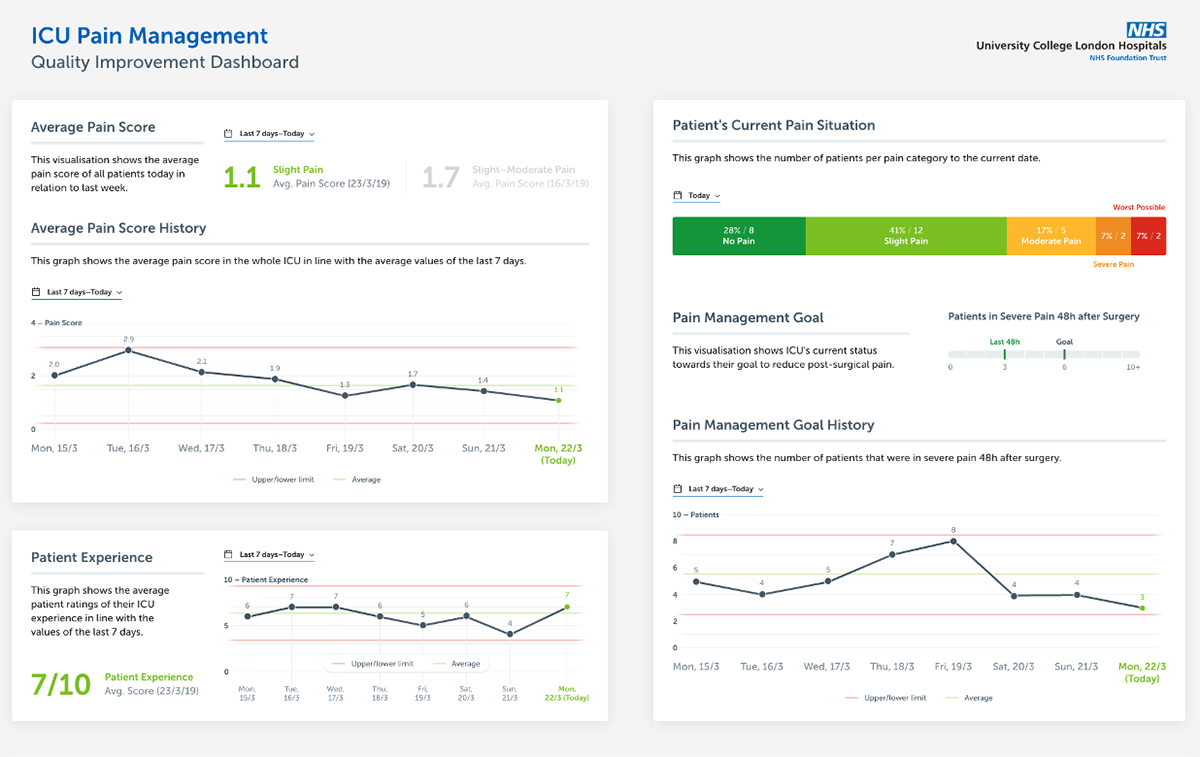 | Senior Staff and Management 1. Overview of the unit’s pain management performance over time; 2. Pain management performance & patient experience data; 3. Visually see the end quality improvement goal; |
